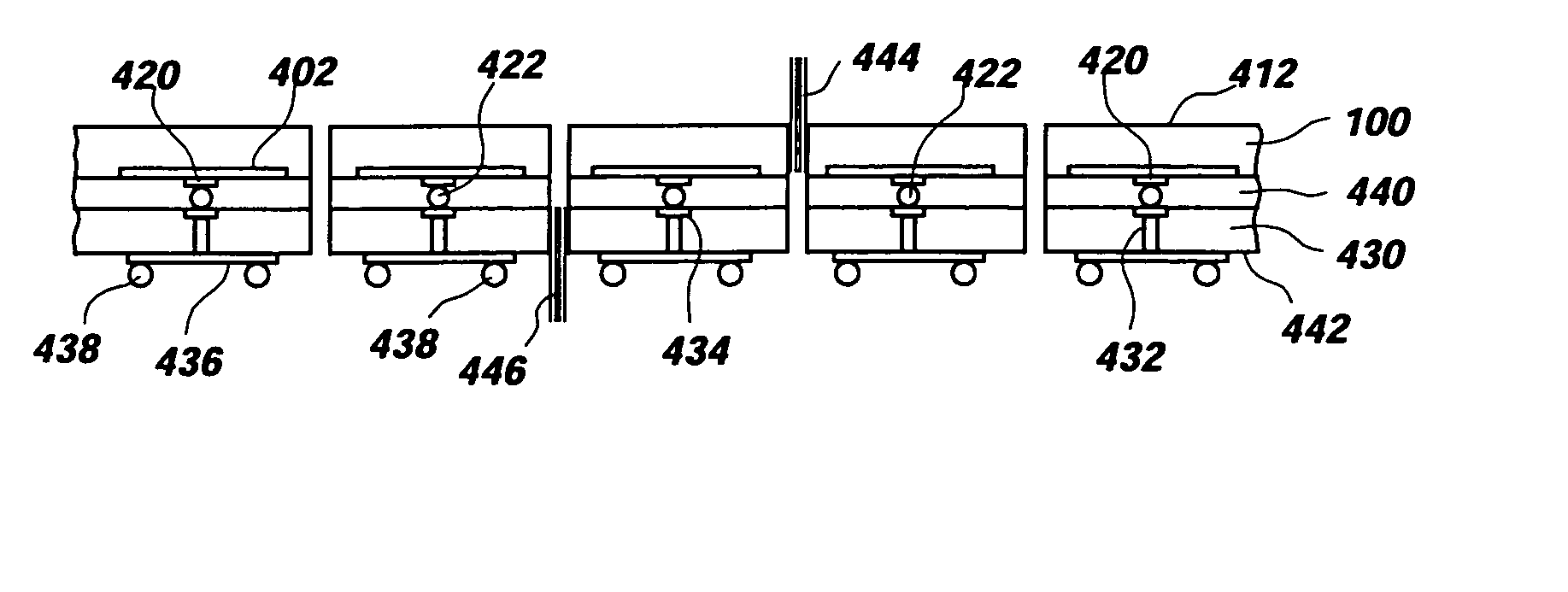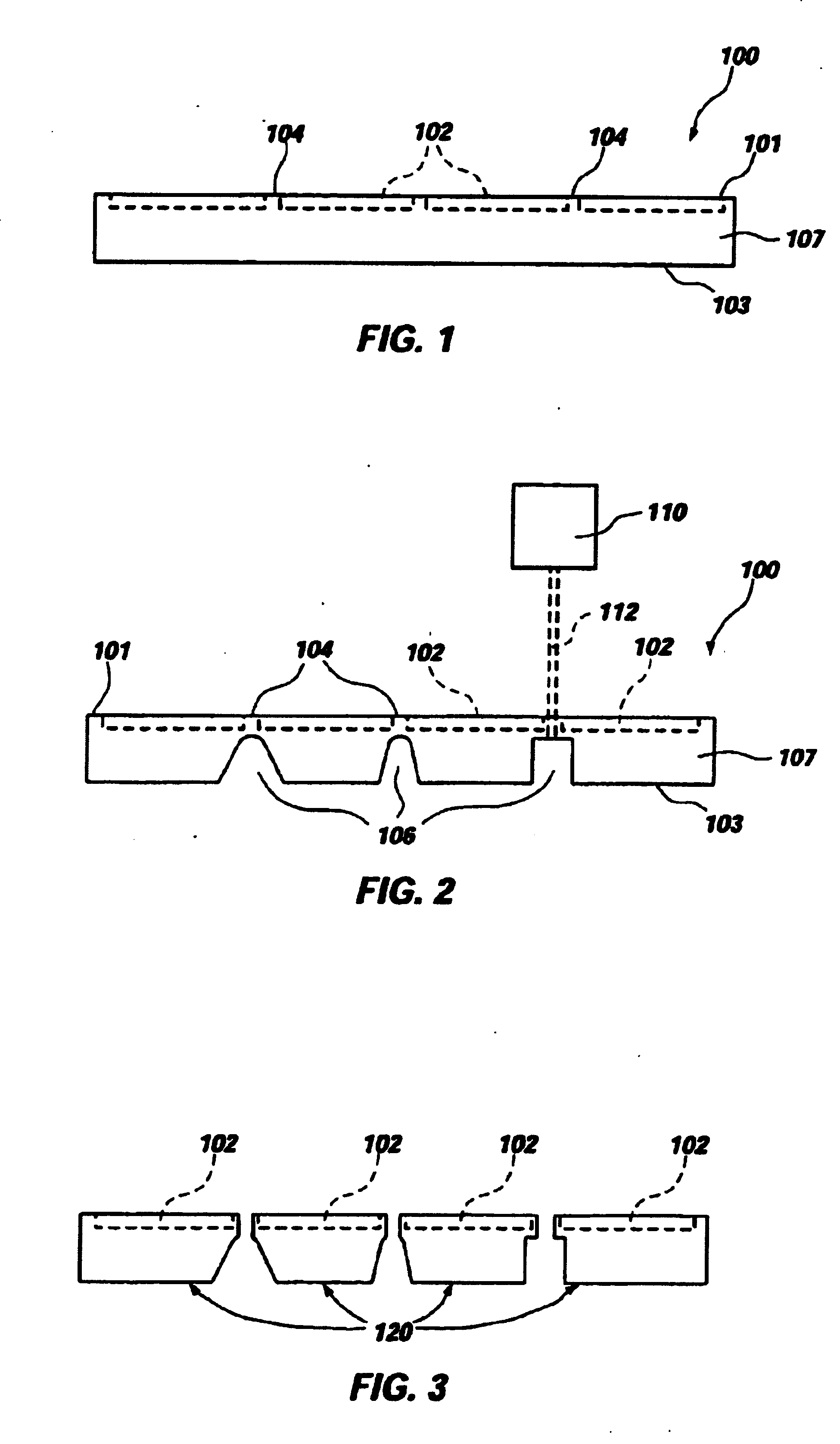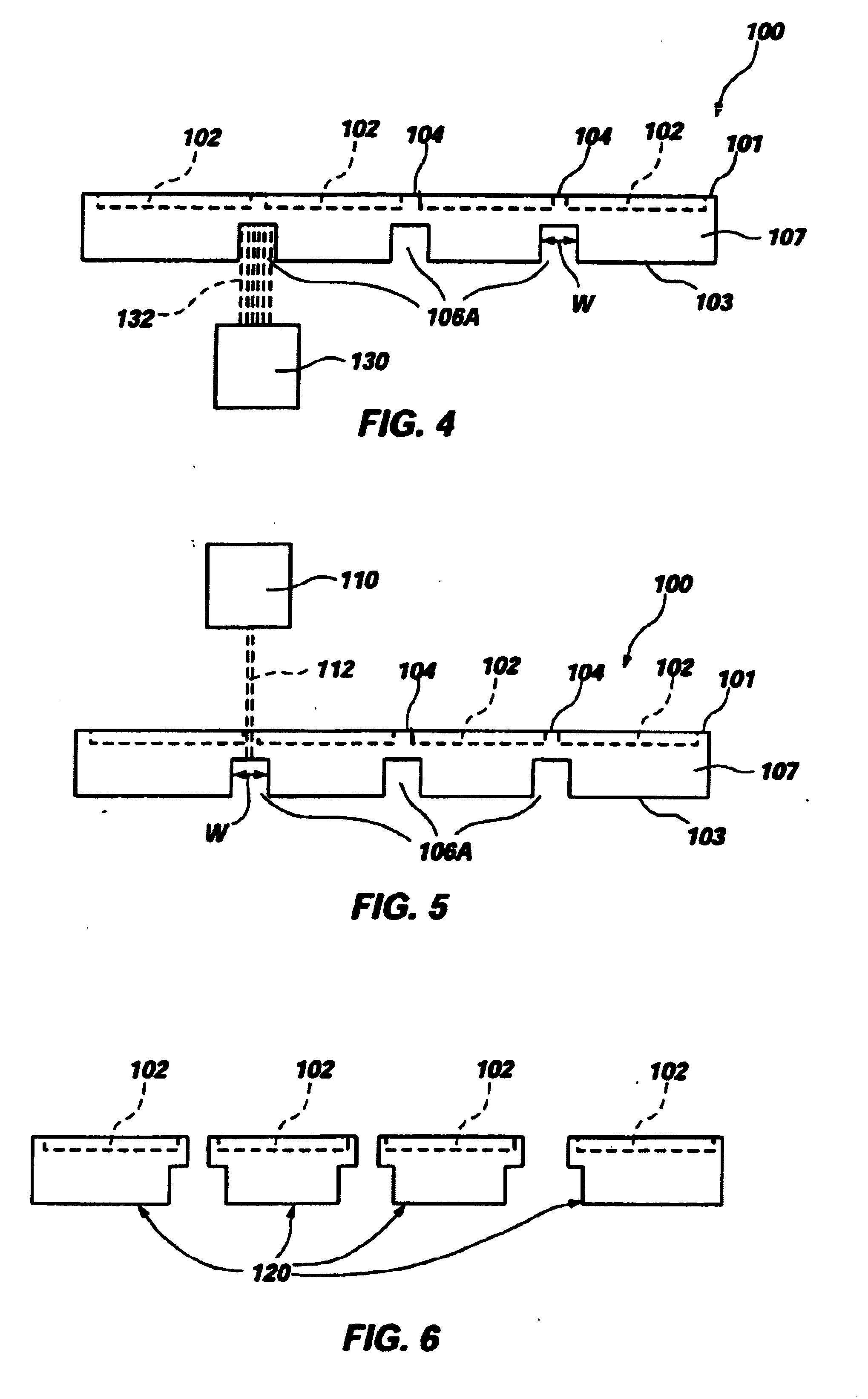Methods and apparatus relating to singulating semiconductor wafers and wafer scale assemblies
a technology of semiconductor wafers and scale assemblies, which is applied in the direction of manufacturing tools, solid-state devices, welding/soldering/cutting articles, etc., can solve the problems of lessen the potential for thermal stress, etc., and achieves less width, reduced thickness of the wafer, and limited potential damage to the resulting dice
- Summary
- Abstract
- Description
- Claims
- Application Information
AI Technical Summary
Benefits of technology
Problems solved by technology
Method used
Image
Examples
Embodiment Construction
[0029] As used herein, the term “wafer” is not limited to conventional wafers of silicon or other semiconductor materials but also includes bulk substrates including a layer of semiconductor material carried by a supporting structure including, without limitation, silicon on insulator (SOI) substrates as exemplified by silicon on glass (SOG) and silicon on sapphire (SOS) substrates, as well as other structures known to those of ordinary skill in the art. Further, the terms “active surface” and “top surface” may be used interchangeably herein to designate a surface of a wafer having integrated circuitry fabricated thereon, while the terms “back side,” back surface,” and “bottom surface” may be used interchangeably herein to designate a surface of a wafer opposite that on which integrated circuitry is fabricated. Hence, the use of directional terminology is for convenience and to facilitate understanding of the present invention and the practice thereof, and not by way of limitation, ...
PUM
| Property | Measurement | Unit |
|---|---|---|
| width | aaaaa | aaaaa |
| width | aaaaa | aaaaa |
| rotation | aaaaa | aaaaa |
Abstract
Description
Claims
Application Information
 Login to View More
Login to View More - R&D
- Intellectual Property
- Life Sciences
- Materials
- Tech Scout
- Unparalleled Data Quality
- Higher Quality Content
- 60% Fewer Hallucinations
Browse by: Latest US Patents, China's latest patents, Technical Efficacy Thesaurus, Application Domain, Technology Topic, Popular Technical Reports.
© 2025 PatSnap. All rights reserved.Legal|Privacy policy|Modern Slavery Act Transparency Statement|Sitemap|About US| Contact US: help@patsnap.com



